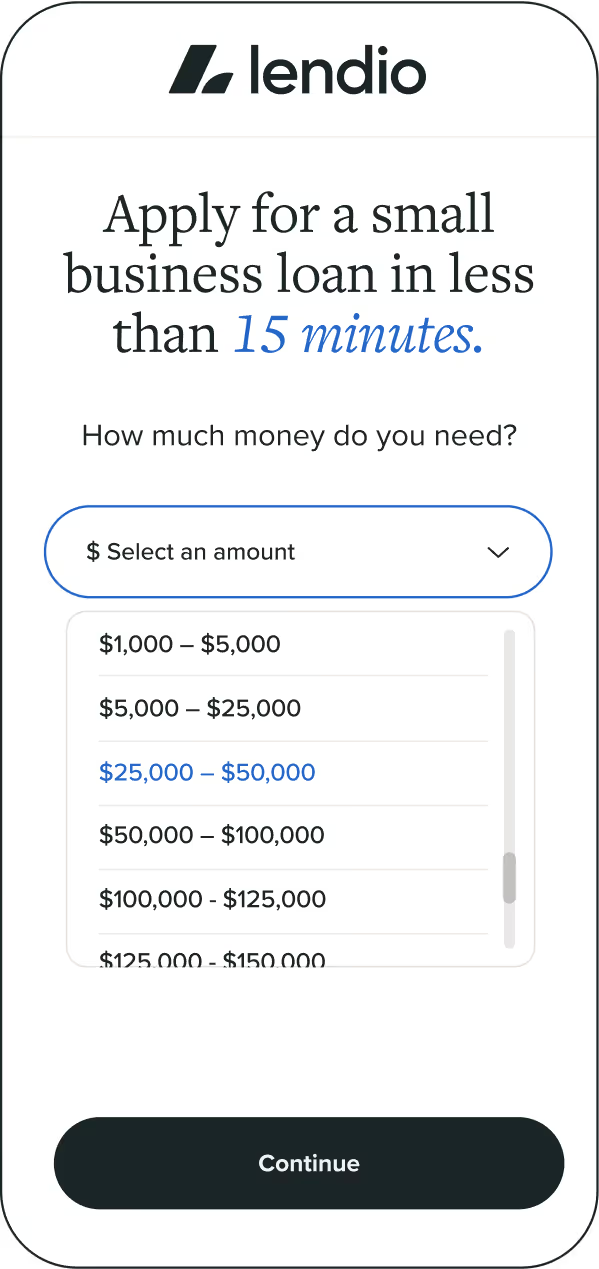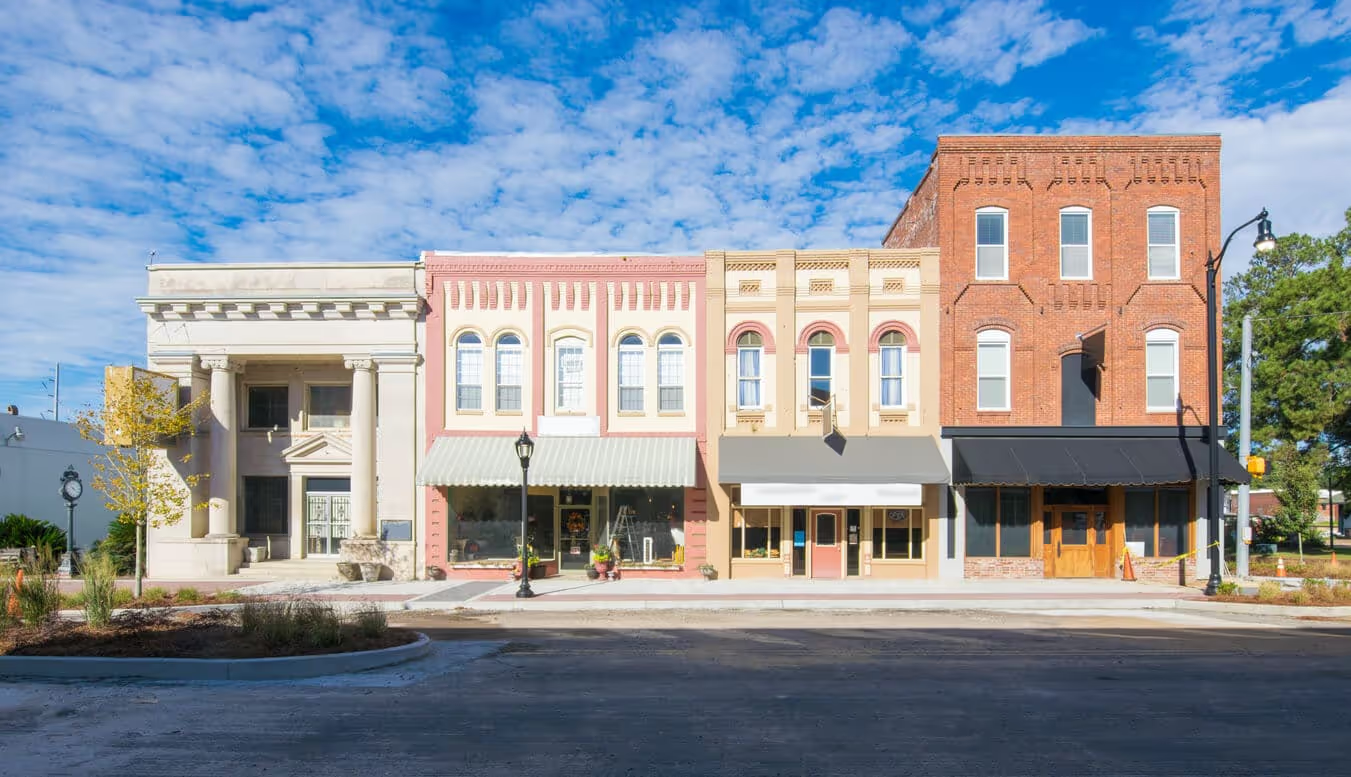Commercial mortgages and property real estate loans.
Use a commercial property real estate loan to buy, build, expand, remodel or even refinance.

What is a commercial mortgage?

Residential loans vs. commercial real estate loans.
Terms vs. amortization schedule.
Commercial loans and real estate loans have key differences in terms and amortization schedules. For commercial loans, the terms are shorter than residential loans, usually between five and 25 years. In certain commercial real estate agreements, the loan term will be different from the amortization schedule.
For example, you might see a 10-year term with a 20-year amortization schedule. This means that the borrower will make payments based on a 20-year schedule, but the loan will be due after 10 years. This results in smaller payments throughout the 10-year term, followed by one large balloon payment at the end.
Percentage of property financed
Whereas residential loans might allow financing up to 95%—or even 100% in certain cases—of the property’s value, commercial real estate loans typically cap at around 70% to 80% of the property’s value. This is because, in the eyes of the lender, commercial properties may carry a higher degree of risk compared to residential properties. As a result, prospective borrowers may need to have a significant amount of capital on hand to cover the remaining value of the property. This difference underscores the importance of having a robust financial strategy before pursuing a commercial property loan or commercial mortgage.

Commercial mortgage rates.
To get a ballpark idea of how much your commercial mortgage payments could be, check out our commercial real estate calculator. Plug in a few numbers and we’ll do the math for you.
Minimum requirements for a commercial mortgage.



What type of equipment funding is best for your business?
These are the most popular types of funding that other real-estate focused businesses qualify for through Lendio.
Conventional commercial mortgage.
A conventional commercial mortgage is the most traditional type of loan for commercial real estate. It usually requires a high credit score, a significant down payment, and an established business history to qualify.
SBA 504 loans.
SBA 504 loans are partially backed by the Small Business Administration and can be used only for the purchase of real estate. These loans offer favorable interest rates and longer terms, making them an attractive option for many business owners.
SBA 7(a) loans.
SBA 7(a) loans can be used for any business expense including purchasing or refinancing commercial real estate. These loans offer lower down payments and longer repayment terms compared to conventional loans, making them more accessible for businesses with limited capital.
*Qualification criteria, rates, and other funding terms will vary depending on the type and location of your business, and upon other factors. This is not a guarantee of funding, and it should not be relied upon as an accurate assessment of the availability or terms of the represented funding products.
How to apply for a commercial property loan.
Tell us about your business.
Answer a few simple questions and complete the application in minutes.
Submit your application.
We’ll present your application to our marketplace 75+ lenders. Applying is free and won’t impact your credit score.
Compare offers.
Find the funding option with the terms that best fit your small business goals.
Get funded.
Once you accept, funding can hit your bank account in as little as 24 hours.


14+ years of serving small businesses.
Get the answers and the funding you need with support all along the way.
in small business funding facilitated in the last decade.
21,500 Trustpilot® reviews.
50% repeat customers.
total small business loans funded in the last decade.
FAQs
Find answers to some commonly asked questions about commercial mortgage loans.
You can use a commercial mortgage to purchase a commercial property—whether it’s office space, a factory, retail, or restaurant space. If you can’t find an existing building that’s right for your needs, you can use your building loan to cover the construction costs of building a new space. Need to expand? A commercial mortgage covers that.
Yes, you can extend your payment terms and adjust your interest rate by refinancing with a commercial mortgage.
Yes. Would updating your building help you to attract more customers? A commercial mortgage can give you the financing to make it happen. Restaurants and retailers have demonstrated the ways an updated interior can drive customers, bringing the owners a sweet return on their investment.
To secure a commercial mortgage, there are several important steps to follow:
- Evaluate your business needs – Understand why you need the commercial mortgage. Are you purchasing a new property, refinancing an existing one, or renovating your current space? You will most likely need the address of the property you wish to purchase before you can complete a loan application.
- Select the appropriate loan – Based on your business needs and financial situation, select the commercial real estate loan that suits you. This could be a conventional commercial mortgage, an SBA 504 loan, or an SBA 7(a) loan.
- Apply for the loan – Once you’ve selected the best loan for your business, submit your application. Be prepared to provide any additional documents requested by the lender.
- Await approval – After submitting your application, the lender will review your information and make a decision. Be patient, as this process can take anywhere from four to eight weeks.
- Close on your loan – Once approved, you’ll be able to proceed with closing on your loan. Review all terms and conditions before finalizing the agreement.
Remember that obtaining a commercial mortgage is a significant commitment. Be sure to consult with a financial advisor or loan specialist to ensure you’re making the best decision for your business.
A loan-to-value ratio (LTV) is the percentage of a property’s value that is being financed through a loan. This ratio is calculated by dividing the loan amount by the appraised value of the property. For example, if you are seeking a commercial mortgage for $500,000 on a property valued at $1 million, your LTV would be 50%.
A lower LTV generally indicates less risk for lenders and may result in more favorable loan terms such as a lower interest rate. Lenders will often require a specific maximum LTV ratio before approving a commercial mortgage. However, keep in mind that other factors—such as credit score, business financials, and down payment—also play a role in determining the terms of a commercial mortgage.
Debt-service coverage ratio (DSCR) is a measure of a borrower’s ability to make loan payments on time. It is calculated by dividing the property’s net operating income (NOI) by the required annual debt service. A higher DSCR indicates that the borrower has sufficient cash flow to cover their loan payments, which can make them more attractive to lenders. Typically, lenders will look for a minimum DSCR of 1.25—meaning that the property generates 25% more cash than needed to cover its debt obligations. A higher DSCR may result in lower interest rates and better loan terms from lenders.
Yes, many commercial mortgages allow for prepayment of the loan. However, there may be penalties or fees associated with paying off the loan early. Be sure to review your loan agreement and discuss any potential prepayment options with your lender before signing on the dotted line.
A recourse commercial property loan means that the borrower is personally liable for the loan and any default could result in the lender seizing personal assets to pay off the debt.
A non-recourse commercial property loan limits the lender’s ability to seek repayment beyond the collateralized property. In this case, if there is a default on the loan, the lender can only seize and sell the property to recoup their losses.
Yes, collateral is typically required for a commercial property loan. This is because the property itself serves as security for the loan. In the event that the borrower defaults on their payments, the lender can take possession of the property and sell it to recoup their losses. The value and condition of the property will play a significant role in determining loan eligibility and terms.
Ready for funding?
See what you can qualify for on the Lendio Marketplace.








